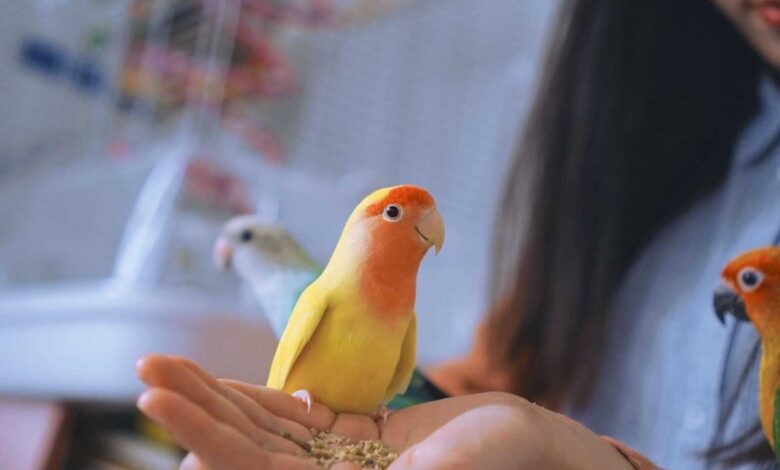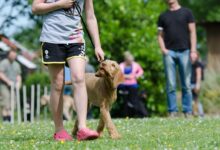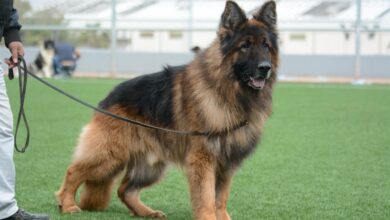
Bird Trick Training Basics
Master the fundamentals of bird trick training to establish a solid foundation for your pet’s learning journey.
Understanding Bird Behavior and Psychology
Familiarize yourself with your bird’s behavior and cognitive capabilities to tailor your training approach accordingly. Learn about their natural instincts, social dynamics, and communication patterns to develop a deeper understanding of their learning preferences.
Establishing Trust and Bonding
Cultivate a strong bond of trust and companionship with your bird to create a conducive environment for effective training. Utilize positive reinforcement techniques, spend quality time together, and prioritize gentle and patient interactions to foster a sense of security and mutual understanding.
Bird Trick Training Techniques
Explore a range of effective techniques to teach your bird an array of engaging and entertaining tricks.
Step-Up Training: Cultivating Obedience and Cooperation
Begin with step-up training to instill obedience and cooperation in your bird. Encourage them to step onto your hand or a perch using positive reinforcement, patience, and repetition, fostering a strong foundation for more advanced trick training.
Interactive Trick Training: Stimulating Cognitive Abilities
Engage your bird’s cognitive abilities through interactive trick training, such as teaching them to wave, spin, or play dead. Utilize clicker training, target training, and consistent positive reinforcement to encourage active participation and mental stimulation.
Vocalization Training: Encouraging Verbal Communication
Promote verbal communication by teaching your bird to talk or mimic sounds and phrases. Create a conducive learning environment with clear enunciation, repetition, and patience, enabling your bird to vocalize in a fun and engaging manner.
Prop-Based Trick Training: Enhancing Dexterity and Coordination
Introduce prop-based trick training to enhance your bird’s dexterity and coordination. Teach them to fetch, ring a bell, or jump through a hoop, fostering physical activity and mental agility through positive reinforcement and gradual skill progression.
Best Practices for Successful Bird Trick Training
Adopt a set of best practices to ensure a seamless and rewarding training experience for both you and your feathered companion.
Tailoring Tricks to Your Bird’s Abilities and Preferences
Customize trick selection based on your bird’s unique abilities, interests, and physical limitations. Choose tricks that align with their natural behavior and personality, ensuring a comfortable and enjoyable learning process.
Implementing a Consistent Training Schedule
Establish a consistent training schedule to promote routine and discipline. Dedicate short, focused training sessions that align with your bird’s attention span and energy levels, allowing for optimal concentration and retention of learned behaviors.
Rewarding Positive Behavior and Progress
Reward positive behavior and incremental progress with verbal praise, favorite treats, or affectionate gestures. Reinforce desirable actions immediately to strengthen the connection between positive behavior and positive outcomes, fostering a motivated and enthusiastic learning attitude.
Ensuring a Safe and Stimulating Training Environment
Create a safe and stimulating training environment that minimizes distractions and potential hazards. Designate a quiet and well-lit space for training sessions, free from potential stressors or disruptions, ensuring a conducive setting for focused learning and interaction.
Troubleshooting Common Bird Trick Training Challenges
Address common challenges that may arise during the training process with effective troubleshooting strategies.
Addressing Lack of Motivation or Interest
Encourage motivation and interest through varied and stimulating training techniques. Introduce new challenges, rotate trick sequences, and incorporate interactive toys to maintain engagement and prevent monotony during training sessions.
Managing Behavioral Regression or Resistance
Address behavioral regression or resistance by reassessing training methods and environmental factors. Identify potential triggers or stressors, modify the training approach, and reintroduce positive reinforcement to re-establish trust and enthusiasm in the training process.
Overcoming Physical Limitations or Health Concerns
Accommodate physical limitations or health concerns by adjusting training intensity and complexity. Consult with a veterinarian to ensure that your training approach aligns with your bird’s health and well-being, prioritizing their comfort and safety throughout the training journey.
Enriching Journey of Bird Trick Training
Embrace the enriching journey of bird trick training as a rewarding and engaging bonding experience between you and your feathered companion. Utilize these comprehensive techniques, best practices, and troubleshooting strategies to nurture your bird’s intelligence, creativity, and emotional well-being, fostering a lasting and meaningful connection built on trust, communication, and shared moments of joy and accomplishment.








